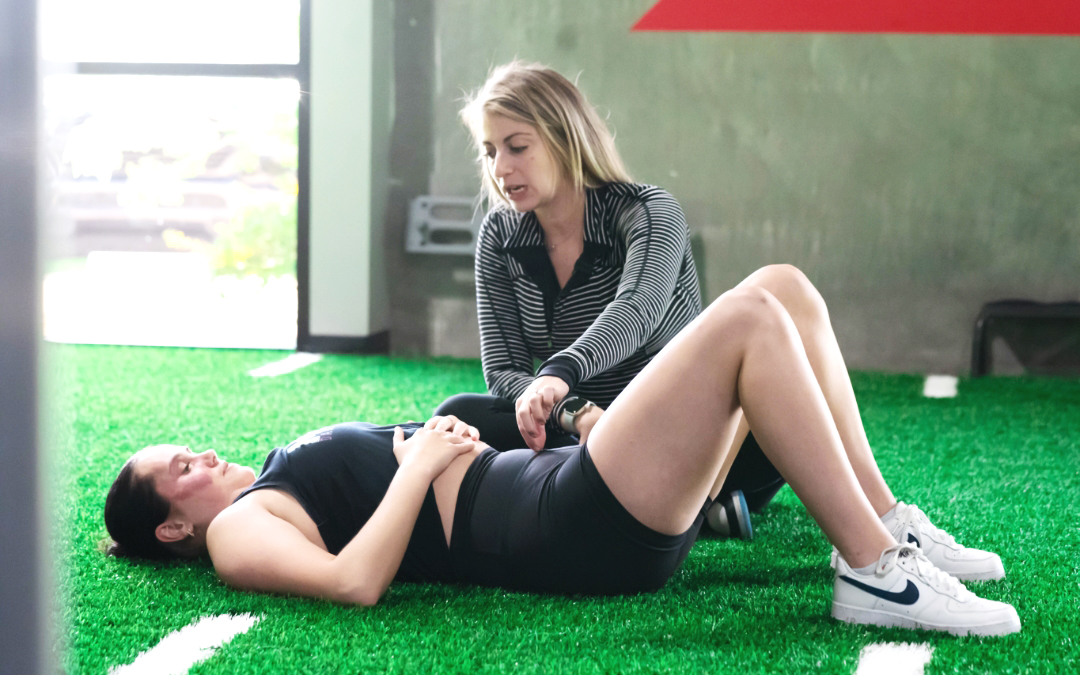There is no doubt that dance is a sport, but, first and foremost, dance is a performance. Dancers are experts at making their craft look effortless and beautiful- even if they are in pain or injured. However, if they dance too long on an injury, the time away from performing can grow exponentially.
Injury in Dance
Pain is often the symptom of something biomechanically that is not working correctly. The area of pain may not be the area to blame. Finding the root of the injury is vital. If pain is in a joint, the source could be above or below that joint. It could also be due to how a certain motion is being performed.
While most sports have off-seasons to allow athletes to rest, recover, and play other types of sports, dance truly does not have an offseason. Between practices, recitals, intensives, and competitions, dancers do not take long breaks from their sport. This alone can lead to an overuse injury.
The longer the dancer waits to address an injury, the longer the time away from sport is going to be- especially if it’s a serious injury. Some injuries do require surgical interventions that, no matter where you’re at in your showcase or your performance routine, will require the dancer to sit out. It’s always best to address pain sooner before it becomes a bigger issue requiring extended time away from sport.
The Demands of Dance
Dancers push their bodies to extremes of flexibility and power. They push their lines. They push their flexibility. When they do this, the muscle is stretched to its maximum length, and joints can become unstable. Dancers often teeter with a point of instability to achieve the lines they want; however, they need to learn how to balance their muscle length to strength as well as their mobility to stability.
4 Stability Exercises for Dancers
Going to physical therapy early for pain or injury can help dancers either remain in their practices or performances. Also, physical therapy can aid in a dancer’s ability to balance their desire to have extreme lines while also achieving stability.
Working on stability within the core, glutes, pelvis, pelvic floor, and feet can help dancers be lifted up- maintaining that effortless look- while also performing safely. A physical therapist can work with you to see exactly where you have strength and weakness, and, together, you can set goals to improve your overall stability, mobility, and flexibility.
4 exercises dancers should incorporate to maximize their stability are:
Hip Controlled Articular Rotations (CARs)
For this exercise, you will be standing on one leg, so, if you want a stabilizer, grab a wall or a chair to help you. Plant one leg firmly into the ground to stabilize yourself and bring your opposite knee into your chest without assistance. Make sure your hips are staying square! Move your hip into external rotation by lifting up your ankle as if you are about to hit a hackey sack. Transition your leg to your side while maintaining knee height and external rotation. Then, internally rotate your hip by moving your ankle behind you without moving your knee. From here, bring your leg behind you without losing knee height and then place your leg down. Reverse this to complete the hip CAR.
Glute Bridges
While lying down on your back, bring your feet towards you and plant them firmly on the ground. Engage your core and ensure it stays engaged throughout the entire exercise. Squeeze your glutes together and allow this contraction to lift them off the ground while keeping your feet and shoulders planted. Maintain a neutral spine, and, while lowering, do not bend your spine to let your glutes meet the ground before any other part of your back.
Clams
Lay on your side and support your head with the arm closest to the ground and stabilize your body with the arm furthest away from the ground. Bend your legs and make sure your hips, knees, and ankles are stacked on top of one another. Lift up the knee of the top leg while engaging your glute, ensure that both hips remain facing forward. Slowly return your leg to the stacked position.
Toe Yoga
You can perform this exercise while standing on one or two legs or while seated. Firmly plant your foot on the ground and spread out your toes. Lift just your big toe and then place it down. Then, lift your other four digits. Repeat this 10 times. Once you have completed this, lift one toe at a time- starting with your big toe and ending with your pinky toe. Then, reverse it. Repeat this 10 times each way.
Dancers- don’t compensate around your pain to continue to perform. Physical therapists are movement experts who can help you gain strength while maintaining flexibility while also finding the root cause of your pain.
Schedule an appointment with a Spooner therapist today!

